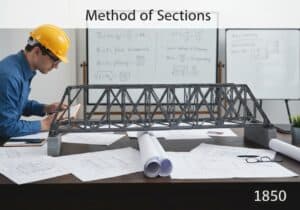Jakob Nielsen, a prominent usability consultant in UI and webdesign mainly, defined usability through five quality components: Learnability (how easy is it for users to accomplish basic tasks the first time?), Efficiency (how quickly can they perform tasks once learned?), Memorability (can users reestablish proficiency after a period of not using it?), Errors (how many errors do users make?), and Satisfaction (how pleasant is it to use?).
Nielsen’s Five Components of Usability
- Jakob Nielsen
Jakob Nielsen’s five-component model, detailed in his seminal 1993 book “Usability Engineering,” provided a practical and influential Rahmen for designers and evaluators. Unlike the more formal ISO definition, Nielsen’s model is more directly applicable to the design and inspection of user interfaces. ‘Learnability’ is crucial for new users; an interface with good learnability allows someone to become productive quickly. ‘Efficiency’ targets expert users, ensuring that the system doesn’t hinder them once they’ve mastered it, often through features like shortcuts or advanced commands. ‘Memorability’ addresses the casual user who may return to the system after a long break. The interface should be easy to remember, minimizing the need for retraining. The ‘Errors’ component is not just about preventing errors but also about making them less catastrophic and providing clear ways for users to recover. A good system might use confirmation dialogs for destructive actions or offer a robust “undo” feature. Finally, ‘Satisfaction’ captures the subjective element of the user’s experience, acknowledging that even an efficient and error-free system can be frustrating or unpleasant to use. This model’s strength lies in its intuitive nature and its direct translation into actionable design goals and evaluation criteria, making it a cornerstone of practical usability work for decades.
Typ
Unterbrechung
Verwendung
Vorläufersubstanzen
- General principles of cognitive psychology related to learning, memory, and problem-solving.
- Early HCI research on user performance metrics.
- The Xerox Star user interface, which pioneered many user-friendly concepts.
- Work by researchers like Donald Norman on the psychology of everyday things.
Anwendungen
- heuristic evaluation of user interfaces
- structuring usability test plans and reports
- guiding user interface design decisions
- teaching usability principles to students and professionals
- creating design checklists and style guides
Patente:
Mögliche Innovationsideen
!Professionals (100% free) Mitgliedschaft erforderlich
Sie müssen ein Professionals (100% free) Mitglied sein, um auf diesen Inhalt zugreifen zu können.
VERFÜGBAR FÜR NEUE HERAUSFORDERUNGEN
Maschinenbauingenieur, Projekt-, Verfahrenstechnik- oder F&E-Manager
Kurzfristig für eine neue Herausforderung verfügbar.
Kontaktieren Sie mich auf LinkedIn
Integration von Kunststoff-Metall-Elektronik, Design-to-Cost, GMP, Ergonomie, Geräte und Verbrauchsmaterialien in mittleren bis hohen Stückzahlen, Lean Manufacturing, regulierte Branchen, CE und FDA, CAD, Solidworks, Lean Sigma Black Belt, medizinische ISO 13485
Wir suchen einen neuen Sponsor
Ihr Unternehmen oder Ihre Institution beschäftigt sich mit Technik, Wissenschaft oder Forschung?
> Senden Sie uns eine Nachricht <
Erhalten Sie alle neuen Artikel
Kostenlos, kein Spam, E-Mail wird nicht verteilt oder weiterverkauft
oder Sie können eine kostenlose Vollmitgliedschaft erwerben, um auf alle eingeschränkten Inhalte zuzugreifen >Hier<
Verwandte Erfindungen, Innovationen und technische Prinzipien













